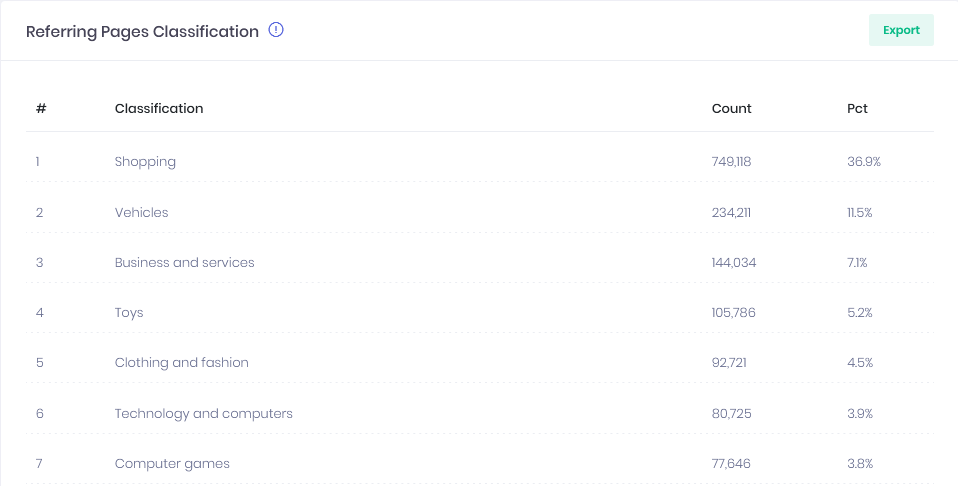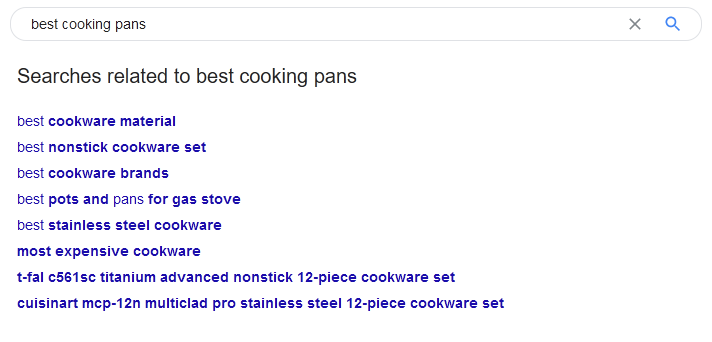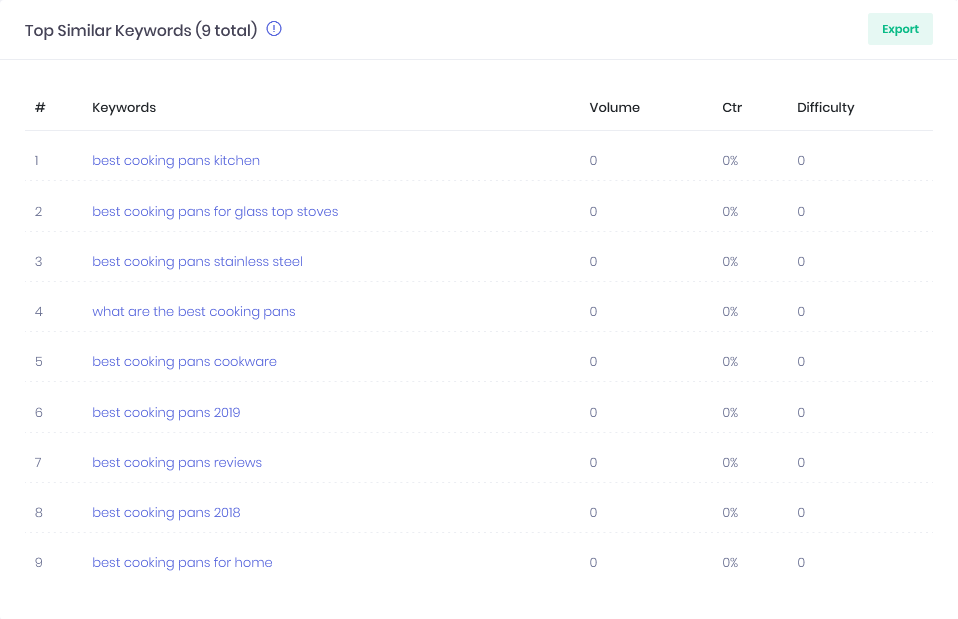What is a Backlink Profile?

In this post, you will learn the backlink profile definition and the important role it plays in your site’s SEO efforts, and how to conduct backlink Profile analysis.
Mainly, backlink Profile helps your site rank on top of SERPs for your keyword faster and better than any tactic out there. But before I get ahead of myself, let’s go back to the primary question at hand:
So, what is a backlink profile?
Table of Contents
A backlink profile refers to the collection of inbound links from a different site pointing to yours. Site owners strive for a “strong” link profile if they want their pages to rank high on organic search.
You can determine the strength of a backlink profile based on how popular a domain is. For example, a backlink from a household brand like CNN is infinitely more powerful than thousands of links from less reputable sites. Of course, a single link doesn’t comprise an entire profile of links, which is why you must get as many links from the best possible websites.
How to measure backlink profile
To check your backlink profile, log in to your SEO Explorer account, go to Links > Domain Backlinks under Domains, and enter your domain URL. You will see the list of backlinks your site currently has.

To see your site’s best links, set the filter to a minimum Domain Score (DS). The score computes for the domain’s authority using different SEO factors. The tool then shows you the links that meet your criteria.

Once you identify your best backlinks, make sure to keep track and not lose them. There are situations where the links get lost along the way for some reason, causing your SERP rankings to drop. And you don’t want that to happen to your site!
Analyzing your link profile
So, now that you have an idea of how your link profile looks like, it’s time to actively search for backlink opportunities. The reason is because strong backlinks don’t fall from the sky to your lap. You have to work hard to acquire them. In this case, you need to develop a strategy when building links to your site.
But first, you must understand what makes a “high quality” backlinks. It’s possible to still get backlinks that move the needle on SERPs from sites that aren’t as popular.
In this case, it’s just a matter of breaking down backlinks to their core characteristics. Using these variables will help you understand the impact that each link you have to your profile. That said, below are factors that you must consider when building a formidable backlink profile.
Classification
This term refers to the groups or clusters of backlinks to your site. While not all links are the same, others fall under the same category. For example, if your site has backlinks from websites about vehicles, then they are classified under “Vehicles.”
Classification comes into play once you factor in the industry associated with your website. Industry refers to the category associated with your site.
Assuming that you have a website about fishing, do the links from vehicle sites make your link profile stronger? Since the correlation between fishing and vehicle is arguably not strong, then the links would only make a minor difference on your SERP rankings. Now, if you want to rank higher on organic search faster, then you need to build more links on fishing sites.
Classification is how search engines understand your website better based on your link profile. If you go to Links > Referring Pages Classification under Domains, you will see the number of backlinks under a group that your site has the most.

In other words, your industry should match the classification of links in your profile. And it doesn’t have to be a direct match. For a fishing site, getting links from sites about boats, lakes, and bait, to name a few, makes sense from a search engine and a reader’s standpoint.
The closer the relationship between the classification of websites are, the stronger the backlinks that exist between them become. Therefore, you must make building links to sites closely related to your industry a priority.
Language distribution
The anchor text distribution of your backlinks help search engines understand the context of the link. Generic anchor texts like “click here” are excellent ways to diversify the anchor texts in your backlink profile. However, they don’t really describe what the page linked to it is about.
As a result, they won’t be as effective compared to anchors with partial match keywords. Because search spiders cannot make the correlation between generic terms as anchor texts and pages on your site.
For example, if you have a page optimized for “best cooking pans,” a quick look on related keyword searches under SERPs gives you a list of potential partial match anchor texts to use for your backlinks. Keep in mind that the ones that show below aren’t the only related searches for the phrase you entered. But the fact that Google showed them to you means that there is a strong connection between these related searches and your keyword.

Therefore, using these anchor texts pointing to your site pages help increase link relevancy without having to use the same anchor text over and over. With SEO Explorer, you can build a list of anchor texts using Overview > Similar keywords or Overview > Similar keywords under Organic Keywords.

ccTLD and language
For a website that caters to a local market, let’s say France, it makes sense for it to acquire links from French websites. You can determine these websites by looking for the domain extension .fr, i.e. France-visas.gouv.fr. This reason is why country code top-level domains (ccTLDs) matter in your backlink profile.
It tells search spiders the location and market of your audience. So, if your site has lots of backlinks from French websites, Google would index your site higher on Google.fr.
And while there’s still value to location-agnostic domain extensions like .com or .net, ccTLDs bear more equity to your local SEO campaign. To show you the countries with the most backlinks to your site, go to Links > Countries under Domains in your SEO Explorer account.

It’s possible to have lots of backlinks from ccTLDs that aren’t your target audience. This could mean two things: either people from those countries that naturally link to your site as a resource or someone is spamming your site.
For instance, if you run a site catering to the German market, then having links from French domains makes your website look fishy. What you can do to fix the problem is to build stronger backlinks to drown out the negative ones or, if worse comes to worst, disavow the spammy links.
The Value of Monitoring Your Backlink Profile
It’s essential to monitor your backlink profile so you can be on top of various events, good or bad.
Spammy links
Sometimes we get spammy links with no apparent reason, or someone is running a negative SEO campaign against our site.
Although Google says it ignores spammy links, you should not take anything coming from Google’s officials as 100% true.
In the case you spot spammy links, disavowing them in the Google Search Console is a good thing.
Good mentions
A client of yours is saying good things about your brand or site, good work, now that you know it (because you monitor Your Backlink Profile) you can leverage it.
You can twit about that review, put it on Facebook, maybe ask the client to give you good feedback on feedback sites, and there are many options.
Bad mentions
Someone is saying bad things about your service or site. This is life, and you can’t please everyone.
The bad review could go unnoticed, and it could become viral, why take the risk, address it as soon as you found out about it (again, because you monitor Your Backlink Profile).
Conclusion
There are lots of factors involved in building a backlink profile that helps your site rank on top of organic search. And managing all these variables at once is a tall order regardless of your SEO experience. At this point, you need a tool that will break down your link profile into these segments and help you understand what you must do to fix and improve it.
Among the tools out there, SEO Explorer shows your site’s backlinks and categorizes them according to classification, anchor text, and the like. You can try this tool for free by signing up here to help you understand your backlink profile better.
